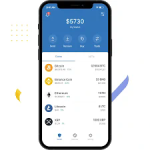How to Stake Tokens on Trust Wallet: A Comprehensive Guide
### Introduction
In the ever-evolving landscape of cryptocurrency, staking has emerged as a popular mechanism for earning passive income. Among numerous options available for staking, Trust Wallet stands out as a user-friendly and versatile mobile wallet. This article aims to provide an in-depth analysis of how to stake tokens on Trust Wallet, exploring the intricacies of the process, the benefits of staking, the various tokens eligible for staking, and important considerations before getting started.
### What is Staking?
Staking is the process of actively participating in transaction validation (similar to mining) on a proof-of-stake (PoS) blockchain. Users lock or “stake” their coins in a wallet to support network operations, such as block validation and security, in return for potential rewards. This activity is foundational to maintaining the integrity and functionality of PoS networks.
### Benefits of Staking
1. **Passive Income**: Stakers can earn rewards simply by holding and staking their cryptocurrencies, providing an avenue for passive income.
2. **Support Network Security**: By staking tokens, users contribute to the security and efficiency of the blockchain network.
3. **Potential for Token Appreciation**: Staking often incentivizes users to hold their tokens long-term, which can lead to appreciation in asset value.
4. **Community Engagement**: Staking tokens often allows users to participate in network governance, influencing decisions regarding upgrades and operations.
### Trust Wallet Overview
Trust Wallet is a decentralized mobile wallet that allows users to manage their cryptocurrencies, including Bitcoin, Ethereum, and a variety of altcoins. As a solid platform for staking, Trust Wallet provides an integrated staking feature for certain cryptocurrencies, allowing users to seamlessly earn rewards without needing to transfer their assets to an exchange.
### How to Stake Tokens on Trust Wallet
1. **Download Trust Wallet**: Trust Wallet is available on both iOS and Android devices. Download the app from your device’s respective app store and create a new wallet or restore an existing one using your seed phrase.
2. **Fund Your Wallet**: To stake tokens, you need to have eligible tokens in your Trust Wallet. You can purchase tokens through various exchanges and transfer them to your Trust Wallet address.
3. **Choose a Staking Token**: Not all cryptocurrencies can be staked on Trust Wallet. Some of the popular staking tokens available on the platform include:
– **Binance Coin (BNB)**
– **Tezos (XTZ)**
– **Tron (TRX)**
– **Cosmos (ATOM)**
– **Algorand (ALGO)**
4. **Access the Staking Feature**:

– Open your Trust Wallet app and navigate to the “Wallet” tab.

– Select the cryptocurrency you want to stake.
5. **Stake Your Tokens**:
– Tap on “More” or the options button, then select “Stake.”
– Choose the amount of tokens you wish to stake, and review the staking terms, including the staking rewards and duration.
6. **Confirm and Monitor Your Staking**:
– After you confirm the staking transaction, your tokens will be locked for the specified staking period.
– You can monitor your staking rewards directly from the “Staking” section in your Trust Wallet.
### Understanding Staking Pools
Many coins use staking pools to aggregate stakes from multiple users for increased efficiency and profitability. In a staking pool:
– **Contributions**: Users pool their tokens together, which increases the likelihood of earning rewards.
– **Payout Distribution**: Rewards are then distributed proportionally to the amount contributed by each participant.
Users must consider the reliability and reputation of the staking pool before joining, as some may charge higher fees or may not distribute rewards fairly.
### Risks and Considerations
1. **Market Volatility**: The value of staked tokens can fluctuate greatly. Users may experience paper losses even when earning staking rewards.
2. **Lock-Up Periods**: Some staking mechanisms may impose lock-up periods during which staked tokens cannot be accessed. Users should be aware of the duration and terms before staking.
3. **Slashing**: In some PoS networks, a slashing mechanism is implemented to punish malicious activities. If a validator acts improperly, a portion of the staker’s tokens may be forfeited.
4. **Platform Security**: While Trust Wallet is reputable and maintains user control over private keys, users should still implement additional security practices, such as enabling two-factor authentication and ensuring their devices are secure.
### Maximizing Staking Rewards
To optimize staking rewards, consider the following strategies:
– **Research Validators**: Different validators may offer different reward structures. Investigate their performance, fees, and history of returns before deciding where to stake your tokens.
– **Diversification**: Just as with investments, diversifying your staking portfolio can mitigate risks and potentially enhance returns by participating across various networks.
– **Stay Updated**: Cryptocurrency markets and regulations are constantly evolving. Staying informed about network upgrades, changes in staking rules, or new opportunities can improve staking outcomes.
### Conclusion
Staking tokens through Trust Wallet is a straightforward process for earning passive income while supporting the functionality of various blockchain networks. However, potential stakers must consider market volatility, locking conditions, and the risks associated with different staking options before diving in.
As the cryptocurrency market continues to mature, staking will likely play an integral role in the ecosystem, allowing users to not only hold their assets but also actively engage in the governance and sustainability of blockchain networks. Whether you’re new to cryptocurrency or a seasoned investor, understanding and effectively staking tokens can be a rewarding strategy in your digital asset management journey.


